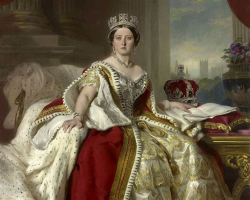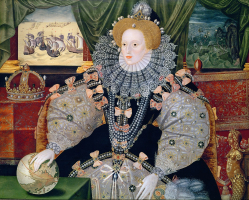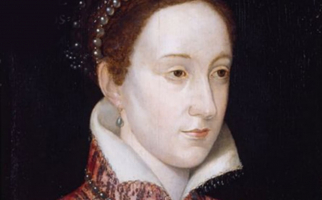Top 8 Interesting Facts about Queen Victoria
Queen Victoria is one of history's most famous monarchs and an era-defining woman whose fascinating life continues to inspire storytellers today. While you may ... read more...have heard of England's long-reigning monarch, Queen Victoria will likely surprise you in many ways. Here, Toplist would like to introduce to readers the 8 Interesting Facts about Queen Victoria that may not know.
-
From 20 June 1837 until her passing in 1901, Victoria was referred to as the Queen of Great Britain and Ireland. She ruled during the epoch that came to be known as the Victorian era. She reigned for 63 years and 7 months, which was a record for a British queen. Great Britain saw significant industrial, political, scientific, and military transformation during this period, which was also characterized by the rapid growth of the British Empire.
Princess Victoria of Saxe-Coburg-Saalfeld and Prince Edward, Duke of Kent and Strathearn, King George III's fourth son, are the parents of Victoria. Queen Victoria was given the name Alexandrina Victoria when she was born on May 24, 1819, at Kensington Palace in London, England, in honor of her godfather, Tsar Alexander I.
She was given the name Drina as a child. She prefers to use her middle name, and she did not begin going by Victoria until she was crowned queen. At that time, the name Victoria was well-known around the world and even came to symbolize the Victorian age, a period of significant social change. Therefore, her first name was not Victoria, she was known as "Drina". At the time of her birth, Victoria was fifth in line for the British throne, after George III's three uncles, her father, Edward, and the four eldest sons.
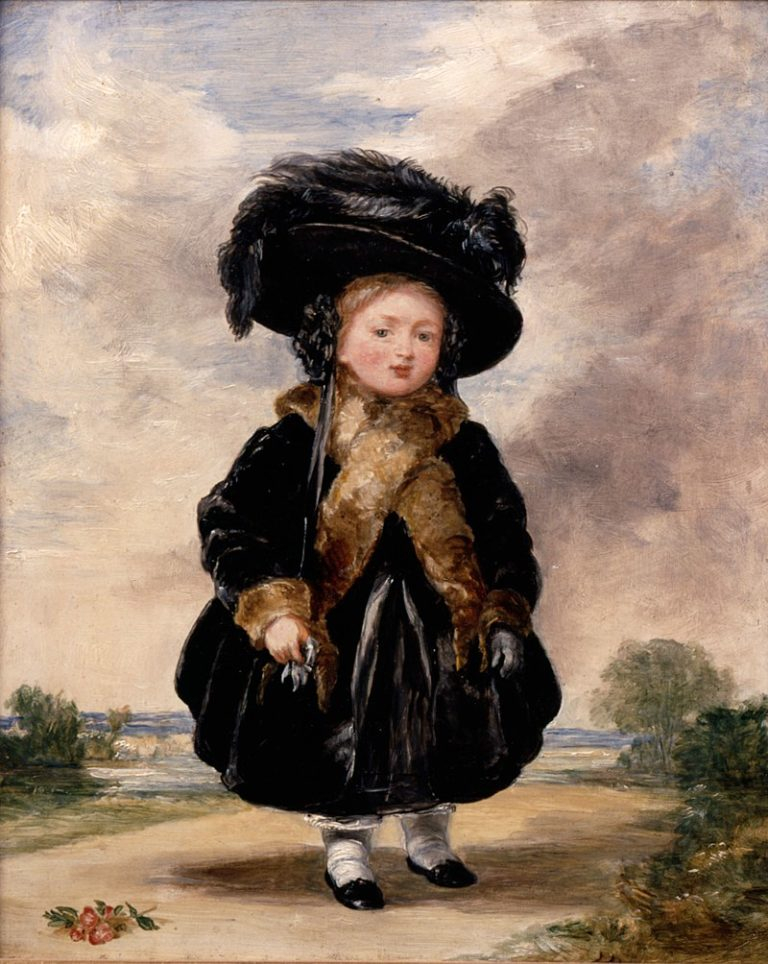
Princess Victoria aged four - Photo: discoverwalks.com 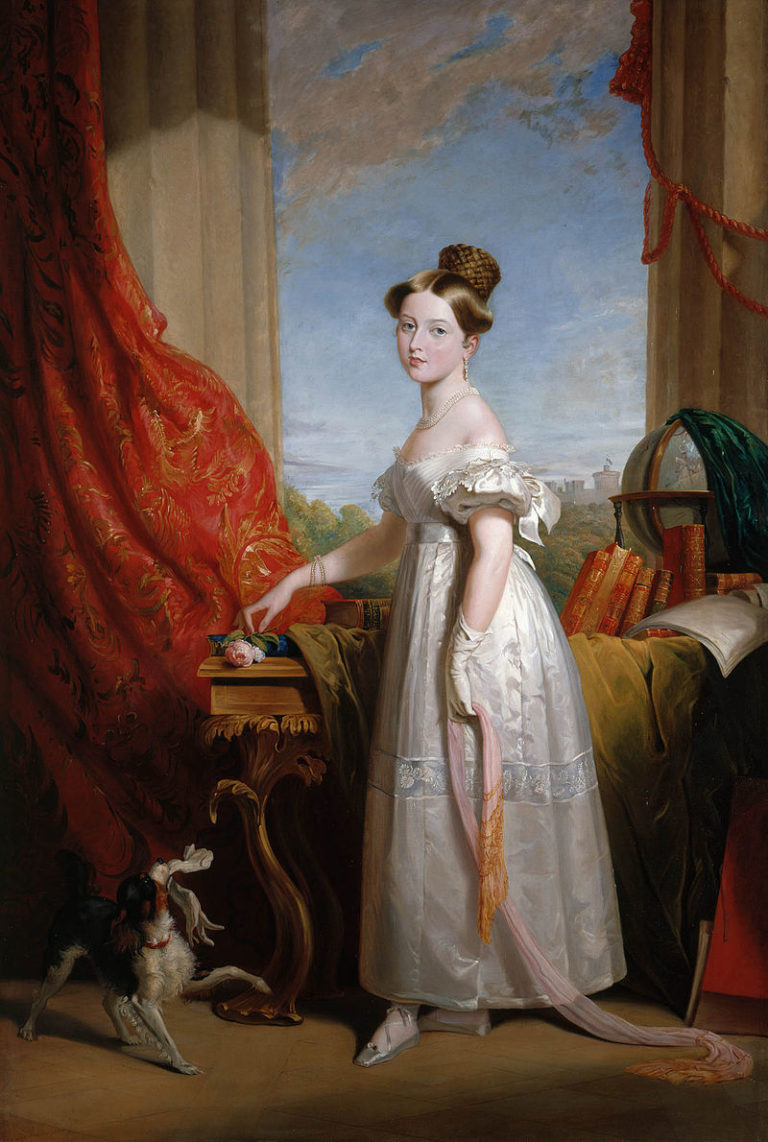
Princess Victoria - Photo: discoverwalks.com -
She had a reputation for being energetic and kind as a youngster. She received her education in the Royal Palace from a governess who has natural creative abilities, including drawing and painting. She also discovered a love of journaling.
However, Victoria had an unhappy childhood. The young Victoria found Kensington Palace to be more of jail as she was kept apart from the royal court. Due to Victoria's mother's bitter feelings toward King William, she was not allowed to attend the coronation. She was nurtured under the watchful supervision of her mother and John Conroy, her curator of calculations, after the deaths of her father and grandfather in 1820.
When Victoria was just eight months old, her father passed away from illness, abandoning her in the care of her mother and John Conroy. The "Kensington System," a rigid code of behavior that Victoria was required to adhere to, was devised by the two. It implied that the future was constantly under adult control and spent little to no time with her age-group peers. At the age of 18, she succeeded in the kingdom after her father's three elder brothers passed away without incident. Victoria, a constitutional queen, has secretly made attempts to sway cabinet selections and government policies. In the public eye, she established herself as a national symbol associated with high moral values. This explains why, after becoming queen, Elizabeth abandoned Kensington Palace.
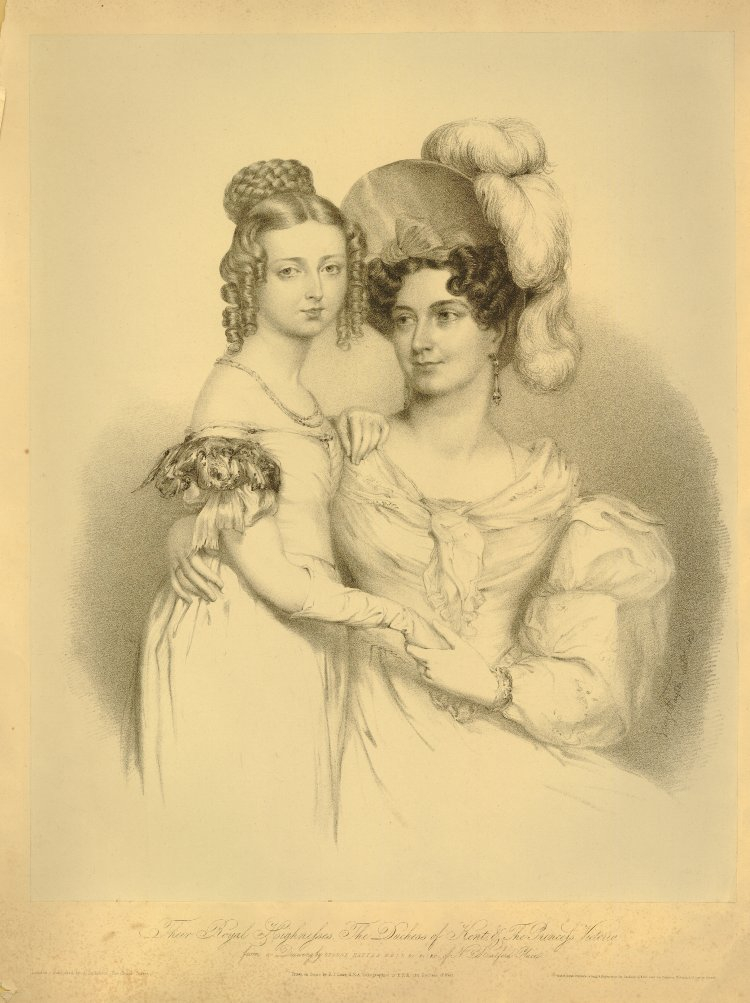
Queen Victoria as a child with her mother the Duchess of Kent - Photo: commons.wikimedia.org Why Queen Victoria's Childhood Was So Troubled? - Video: Absolute History -
At birth, Victoria was fifth in line of succession, behind King George III's four eldest sons including George IV, Frederick, Duke of York, William IV, Duke of Clarence, and Edward, Victoria's father, Duke of Kent. It is challenging for the two eldest brothers to produce additional legitimate offspring because neither the Prince Regent nor the Duke of York has any living children, are divorced from their spouses, or are past reproductive age. In addition, the legal daughters of William and Edward were married on the same day in 1818, but both of them passed away as infants. Princess Charlotte was the first of these, and she passed away on March 27, 1819, two months before Victoria was born. When Victoria was just a few months old, her father passed away in January 1820. Her grandpa passed away a week later, and his eldest son George IV became king in his place. In that period, Victoria was third in line to the throne behind Frederick and William.
Then, the Duke of York died in 1827, followed by George IV in 1830; The throne passed to their next surviving brother, William, and Victoria was thought to be the heir.
Queen Victoria describes the event that changed her life in these words: "I just in my dressing robe, went into my sitting room alone and saw them. Lord Conyngham then informed me that I had succeeded my sad uncle, the King, who had passed away at twelve minutes past two this morning". That is exactly what happened just a month after she turned 18.
In the event that William passed away while Victoria was still a juvenile, it was clearly stated in the Regency Act 1830 that Victoria's mother would serve as regent. As a result of his lack of confidence in the Duchess' abilities to serve as regent, King William said in her presence in 1836 that he intended to live until Victoria became 18 in order to escape regency.
The little princess became King William IV's closest surviving heir to the throne as her father, his siblings, and any other legal heirs died over time. Victoria, who was not meant to be the next monarch, embraced her new responsibility with amazing confidence. And Victoria became Queen when she was only 18.
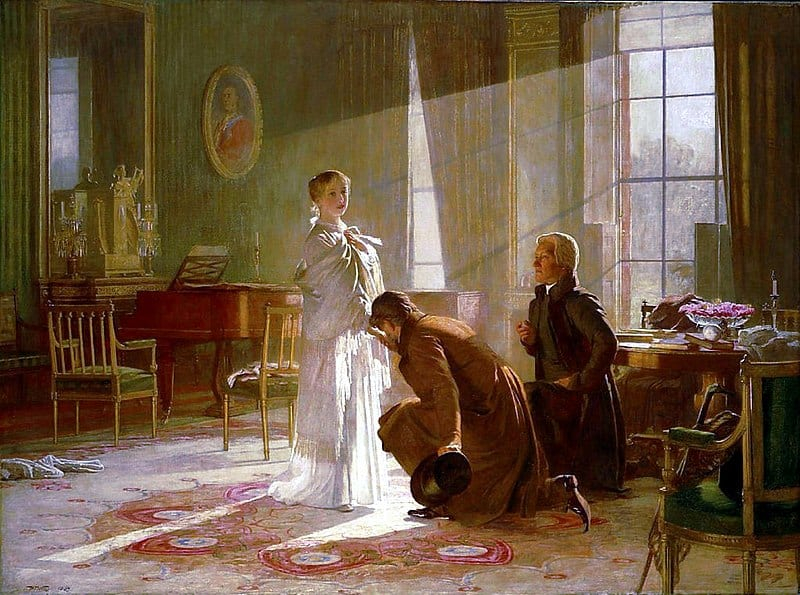
Victoria to throne - Photo: discoverwalks.com Victoria's first morning as Queen - Video: Historic Royal Palaces -
This is probably one of the 8 Interesting Facts about her that Queen Victoria proposed to Prince Albert. Victoria's first cousin was Albert. The moment Queen Elizabeth laid eyes on Prince Albert, she was enthralled and seduced by his charisma. Victoria fell in love at first sight. Elizabeth was just 16 years old when they first met, and they had a flirtatious and friendly four-year relationship.
Victoria was forced to propose to Albert since historically, a male was not allowed to do so to the queen. According to Victoria's journal, the marriage proposal went as follows: she called him and set up a secret meeting with him. She told him that she would be delighted if he agreed to accept her marriage proposal. They repeatedly gave each other hugs, and Prince Albert was extremely nice and loving, Queen Victoria admitted.
On February 10, 1840, they exchanged vows at the Royal Chapel of London's St. James's Palace. Victoria experienced a lightning strike of love. After their wedding, she spent the evening writing in her journal inadvertently that she has never, ever spent an evening like that. Her dearest dear Albert's extreme love and affection filled her with sensations of heavenly love and pleasure that she had never previously dreamed of experiencing. They continued to kiss each other as he held her in his arms. How could she possibly be grateful enough to have such a husband given his beauty, tenderness, and gentleness? ... to have loving names applied to her that she had never heard before was the happiest thing in the world. The best day of her life occurred right now.
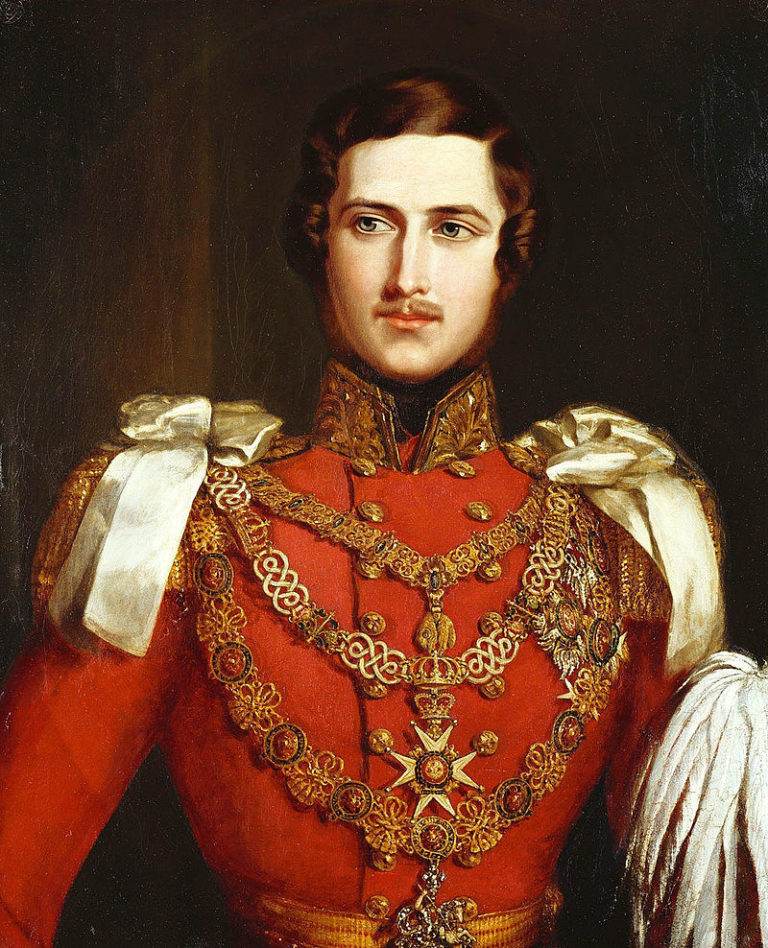
Prince Albert - Photo: Wikipedia.com Victoria & Albert: A Royal Love Story - Video: History Tea Time with Lindsay Holiday -
As for her wedding, Victoria was not interested in a large or expensive ceremony. She was persuaded to have a grander affair, nevertheless, by Lord Melbourne, who was at the time England's prime minister. They were close, and Lord Melbourne served as Victoria's first prime minister.
And the most special thing is that Queen Victoria wore a white wedding dress at her wedding and Queen Victoria made white wedding dresses popular. To stand out on her wedding day, Queen Victoria outfitted her dress complete with an 18-foot train, and wore white satin shoes, a sapphire brooch from Prince Albert, and Turkish diamond earrings on her wedding day. She furthermore donned gloves and a nettle and orange flower wreaths.
It is typical to see wedding dresses in various hues when she gets married. However, Queen Victoria insisted on a white garment with embroidery. Victoria decided to choose her dress to be made in white not to reflect purity but actually to show off its lace at its best. In addition, in this period, the UK lace makers were then having a hard time financially, and it was a blessing that her commission was intended to benefit them by further developing this new industry.
In addition, she also asked guests to attend her wedding not to be allowed to wear white so as not to lose her uniqueness and charm. And she even destroyed her wedding dress so that no one else could make a second dress like it. However, her choice of white wedding dress was eventually replicated and became a tradition at every wedding even though wearing a white dress was not common in her day. That is the reason why Queen Victoria made white wedding dresses popular.
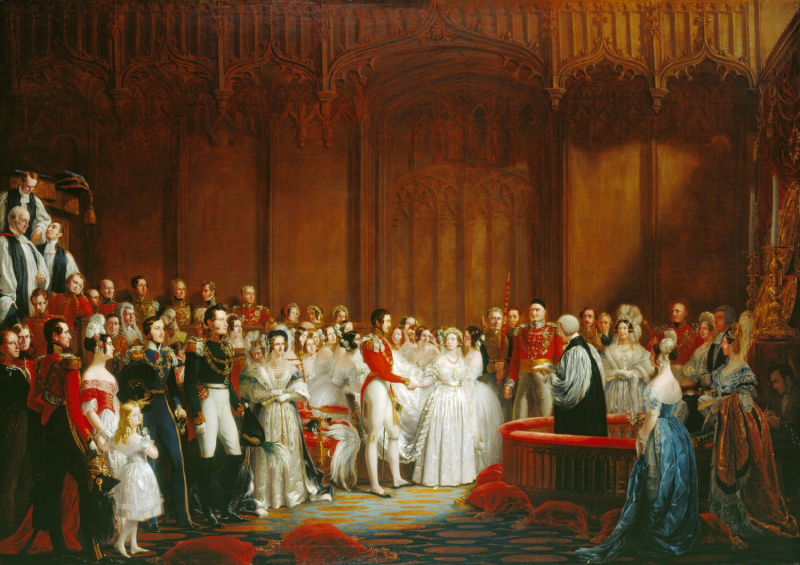
Queen Victoria with white wedding dress and Prince Albert marry at at St James's Palace, London in 1840 - Photo: Wikipedia.com Queen Victoria's Wedding Dress - Video: Summer Anne Lee -
Queen Victoria was the target of multiple failed assassination attempts throughout her reign. And Victoria survived multiple assassination attempts.
The first notable attack was made in 1840 when 18-year-old Edward Oxford aimed his gun at the Queen's carriage in London. Oxford was later accused of treason for his acts, but due to his insanity, he was finally declared not guilty. Victoria was in a carriage traveling along with the London Shopping Centre on May 29, 1842, when John Francis pointed a pistol her way. However, the weapon did not go off. The attacker ran away. William Hamilton, an unemployed Irish immigrant who committed the murder and was deported for seven years, assaulted her carriage in 1849. news about the past. A former soldier named Robert Pate hit the Queen with an iron rod a year later. Fortunately, the Queen was secure after that.
The last significant attack was made in March 1882 when a Scottish poet by the name of Roderick Maclean fired a pistol at Queen Victoria's carriage as it departed Windsor train station. This was actually Maclean's eighth attempt to kill the Queen. Maclean was declared not guilty after being prosecuted for high treason, but because of his mental instability, he was ordered to spend the rest of his days in a camp for refugees until his death in 1921. Queen Victoria faced several assassination attempts due to chaos and terror, and with each narrow escape from death, the populace grew to love her more and more.
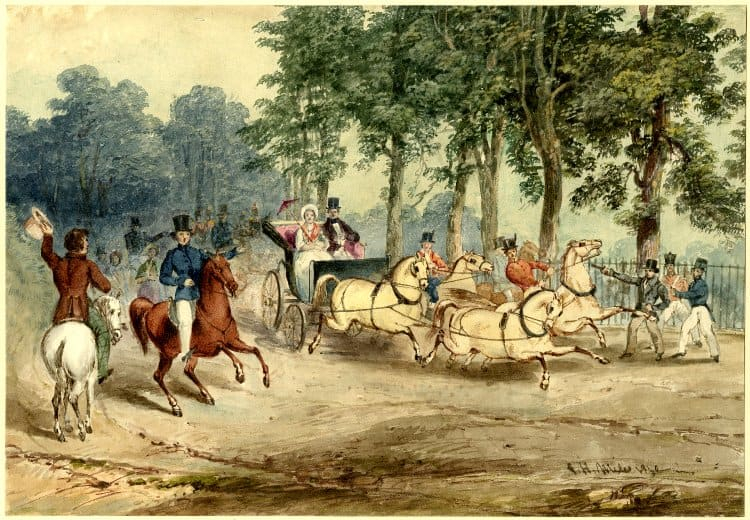
Edward Oxford’s assassination attack on Queen Victoria - Photo: discoverwalks.com 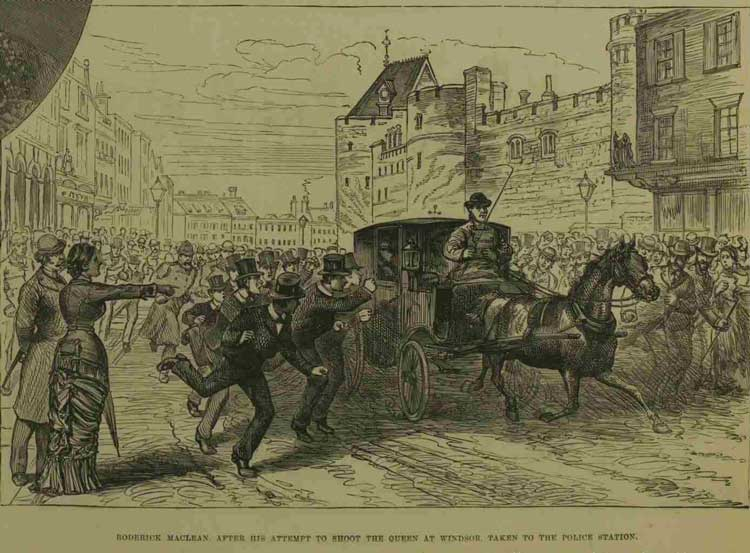
Roderick Maclean Attempts to Shoot Queen Victorian - Photo: jack-the-ripper-tour.com -
Although the Queen herself is not the only one with hemophilia in her family, Victoria became the first person known carrier of hemophilia, a blood clotting disorder. The disease was passed on to members of royal and aristocratic families throughout Europe as a result of Victoria's broad pedigree. Even the Romanov Russian royal dynasty was connected to the hemophilia gene in a 2009 study published in the Journal of Science.
Several of her relatives have died from the illness, including Queen Victoria's son Leopold, Duke of Albany, who fell and died at the age of 30, as well as Friedrich and Leopold, two of Queen Victoria's grandchildren, who both bled to death from the agony. Leopold, Victoria's youngest son, has hemophilia B, and at least two of her five daughters, Alice and Beatrice, have the condition as well. Her great-grandchildren Alexei Nikolaevich, Tsarevich of Russia; Alfonso, Prince of Asturias; and Infante Gonzalo of Spain all had hemophilia during the Victorian era. Prince Waldemar of Prussia, who passed away in 1945, is said to have been the last member of the royal family to carry the illness.
The modern scientists' opinion holds that Victoria's biological father was not the Duke of Kent but rather a hemophilia sufferer since the disease only affects Victoria's descendants and not her forebears. There is no verified proof that Victoria's mother has hemophilia, and even if he did, he would suffer severe sickness because carrier men have always had the condition. Because hemophilia is more common in offspring of older dads and Victoria's father was older than 50 at the time of her conception, it is more plausible that the mutation occurred spontaneously. In around a third of instances, spontaneous mutations occur.
Queen Victoria's Hemophilia Documentary - Video: Harrison J Elkins The Royal Disease - How Queen Victoria spread this disease across European courts - Video: See U in History / Mythology -
Queen Victoria is known as the "Grandmother of Europe" due to her connections to European royal dynasties.
Therefore, the fact that Queen Victoria is called "Europe's Grandmother" is considered one of the 8 Interesting Facts about Queen Victoria that many readers probably do not know.
In 1840, Victoria wed Prince Albert of Saxe-Coburg and Gotha, her first cousin, their offspring married into aristocratic and royal families throughout the continent, turning Victoria into the "Grandmother of Europe" and dispersing hemophilia among European nobility.
Nine children were born to Albert and Victoria throughout their 21-year marriage. To broaden and fortify Great Britain's ties to European kingdoms, certain children were married off into those monarchies. Eventually, 42 of Victoria's grandchildren became members of royal families in countries including Germany, Spain, Norway, Russia, Greece, Sweden, and Romania. In particular, 34 of the 42 grandchildren of Victoria and Albert lived to maturity. Elizabeth II, Harald V of Norway, Carl XVI Gustaf of Sweden, Margrethe II of Denmark, and Felipe VI of Spain are among their surviving descendants.
Victoria fell into a severe state of sadness following Albert's passing in 1861 and stayed away from the public eye. Her isolation led to a brief rise in British republicanism, but her popularity rose again in the second half of her reign. Her Diamond and Golden Jubilees were occasions for widespread celebration. In 1901, she passed away on the Isle of Wight. Her son Edward VII of the House of Saxe-Coburg and Gotha succeeded her as the final British ruler of the House of Hanover.
It is thought that World War I would have been averted if Queen Victoria had lived longer. This is because Victoria's three fighting royal descendants—Kaiser Wilhelm of Germany, Tsarina Alexandra of Russia, and George V of Britain—are all her grandchildren. If Victoria were still living, she would not have permitted her family to engage in hostilities.
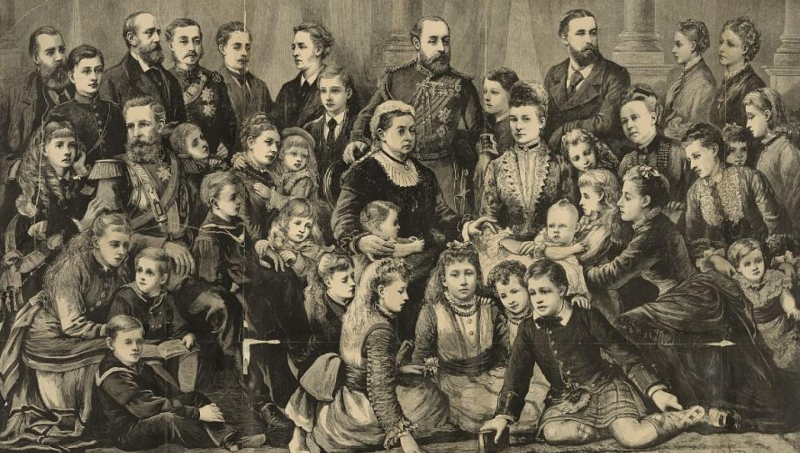
Descendants of Queen Victoria - Photo: rmg.co.uk How is Queen Elizabeth related to other European monarchs? - Video: UsefulCharts










